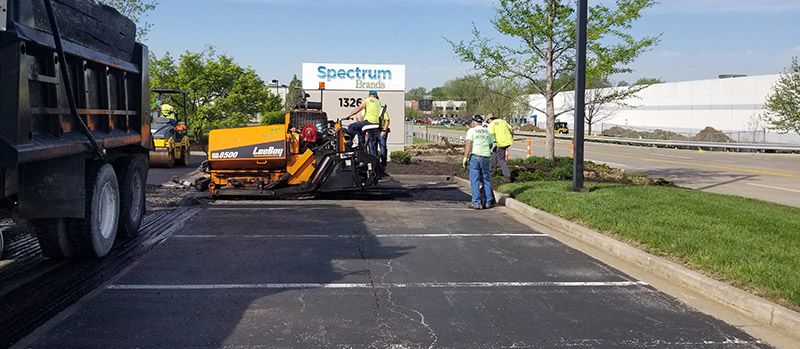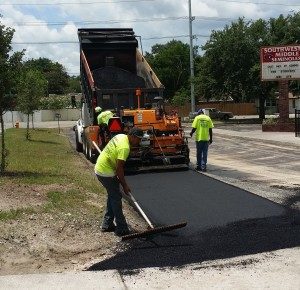The A1 Professional Asphalt & Sealing Llc PDFs
The A1 Professional Asphalt & Sealing Llc PDFs
Blog Article
Getting The A1 Professional Asphalt & Sealing Llc To Work
Table of ContentsAbout A1 Professional Asphalt & Sealing LlcA1 Professional Asphalt & Sealing Llc - TruthsIndicators on A1 Professional Asphalt & Sealing Llc You Need To Know5 Easy Facts About A1 Professional Asphalt & Sealing Llc DescribedA1 Professional Asphalt & Sealing Llc Fundamentals Explained

The oil in a vehicle engine is not just oil. The REOB contains all the ingredients that were in the waste oil as well as the wear metals from the engine (generally iron and copper).
By making numerous blends utilizing various REOB samples and different asphalt binders, the variants mainly can be balanced out. Several States provided samples of known REOB structure to TFHRC researchers, that evaluated the examples to contrast the percentage of added (understood) REOB to the found (evaluated) quantity. The evaluations showed a similar percent of added and found REOB.
Getting My A1 Professional Asphalt & Sealing Llc To Work
They obtained a frustrating feedback. The TFHRC scientists assessed 1,532 examples from 40 States, one Canadian province, and 2 Federal Lands Highway departments. They assessed each example twiceamounting to greater than 3,000 evaluations. None of those States recognized that the asphalt they were purchasing contained REOB. One State insisted its examples had no REOB.
Of the 1,532 examples evaluated, 12 percent included REOB, and some included appreciably high degrees of it at 1020 percent. The greatest level was 34 percent in an example from Texas, which TxDOT had used in a patching substance. This screening also revealed the visibility of phosphoric acid in 11 percent of the examples, and 2 percent consisted of ground tire rubber.
2 years back at TRB's yearly meeting, the Federal researchers held an REOB workshop and presented the searchings for of their lab analyses to a standing room-only crowd. Some companies do not particularly prohibit REOB, they do enforce physical tests that avert its useeffectively a ban. Others do not outlaw it by spec, but have arrangements with asphalt suppliers to stay clear of using REOB
Some Of A1 Professional Asphalt & Sealing Llc
A handful do enable REOB, some within particular limits. As an example, Ohio and Texas restriction degrees to less than 5 percent of the asphalt. To develop a trusted examination method that all States can utilize, the TFHRC scientists established a round-robin test plan. The individuals are 11 State highway companies (Illinois, Massachusetts, Minnesota, Mississippi, Montana, North Carolina, Oklahoma, South Carolina, Texas, Vermont, and Wyoming), 2 independent screening labs, the Ministry of Transportation in Ontario, Queen's College in Ontario, and an Ontario paving professional.
The individuals are evaluating the examples separately using the standards provided by the TFHRC scientists. The outcome will be a recommended AASHTO examination method that any kind of State can take on and utilize.
The pavement with REOB, which lies 0.6 mile (1 kilometer) from the sidewalk without REOB, has similar subgrade, traffic thickness, and environment. The section of Highway655 with 5 to 10 percent REOB showed substantial splitting. In this instance, the presence of REOB was the recognized source of splitting at a reduced temperature levels.
A section of test pavement in Minnesota (MN1-4) located to contain REOB additionally broke too soon. The pavement executed well for the first 3 to 4 years, however after that started to crack.
A Biased View of A1 Professional Asphalt & Sealing Llc
The tests were not comprehensive, however they revealed that at degrees of 6 percent or even more, the tensile toughness of the asphalt dropped substantially. At a level of 3.5 percent REOB, the variant in the physical test approaches was above the effect of REOB. In fact, it was challenging for researchers to assess whether REOB was existing.

One binder parameter taken into consideration is the distinction between the low temperature level important spec temperature for rigidity (S) in the flexing beam of light rheometer and the flexing beam of light rheometer creep slope (m-value) kept in mind as Tcritical. Two independent research groups, one from AASHTO and the other from the Asphalt Institute, concluded that even more research is required on the use of REOB in asphalt.
Previously, all asphalt screening determined design residential properties such as tightness. These examinations do not reveal what products had been contributed to the asphalt. One example gotten during the TFHRC study had a very weird analysis. The example had the complying with examination results: Superpave PG 64-28 with a high temperature level grade of 67.3 Tcritical on the bending beam rheometer was 6.7 degrees Celsius.

A1 Professional Asphalt & Sealing Llc for Dummies
These outcomes show there are weak points in the standard engineering testing protocols that might be made use of. The producer may have an economic benefit and the product passes all the standard tests, but look at here the item might not be useful to guaranteeing long-lasting efficiency. To address this issue and the expansion of new asphalt ingredients and extenders, TFHRC is beginning a research study program to make use of handheld spectroscopic devices, x-ray fluorescence spectroscopy, and Fourier transform infrared spectroscopy to enable analyses to be carried out in the area instead of having to take examples back to the laboratory.
Report this page